
 Share
Share

 Print
Print
The Called On control allows users to specify at which parent E/C frequency a child E/C is to be called on and complied with. The Called On control works in conjunction with the Total Frequency field of the parent E/C's Schedule tab.
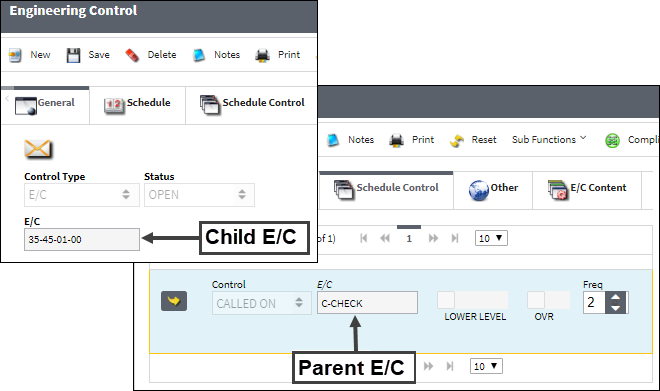
Note: When Switch ![]() MANLLOR is set to Yes, and the E/C is classified as Mandatory, the Lower Level and Ovr (override) checkboxes are disabled.
MANLLOR is set to Yes, and the E/C is classified as Mandatory, the Lower Level and Ovr (override) checkboxes are disabled.
Note: P/N E/Cs can be called on by aircraft E/Cs, but aircraft E/Cs can not be called on by P/N E/Cs.
Note: This control may be utilized multiple times to set up an unlimited number of parent/child E/C relationships.
The parent E/C's total frequency is set up under the Schedule tab. Each frequency represents one compliance of the E/C. For example, if the E/C has a total frequency of 5, upon the 5th compliance the E/C, the total frequency rolls to 1; this cycle repeats until the E/C reaches its repeat number.

The following information/options are available in this window:
_____________________________________________________________________________________
Lower Level Checkbox
When this checkbox is selected it indicates that all of the task card steps for the child E/C are contained within the parent E/Cs task card. When the parent E/C is added to a work order, the child E/C follows but any task cards related to the child E/C will not be attached to the work order.
![]() Do not select this checkbox if the child E/C task cards are to be attached to the work order.
Do not select this checkbox if the child E/C task cards are to be attached to the work order.
Ovr Checkbox (Override checkbox)
This checkbox is not in use; it was designed for a specific customer.
Freq (Frequency)
The frequency number indicates the interval the child E/C is to be called on to the parent E/C. For example, if the frequency number is 2, every second time the parent E/C is added to a work order the child E/C will follow.
Note: If the Freq field is set to '000', the Called On E/C will follow at every occurrence of the parent E/C.
E/C Called On Schedule Exceptions ![]() button
button
Indicates that there are differences between the child E/C and parent E/C schedules. When the button is selected the system displays the E/C Called On Schedule Exceptions popup window displaying the fields where the schedule values are different.
_____________________________________________________________________________________
Called On example:
Using the above parent/child E/C relationship, the child E/C should be called on to the parent E/C each time the parent E/C is at a frequency of 2.
The parent E/C has been complied with 1 time for A/C 145.
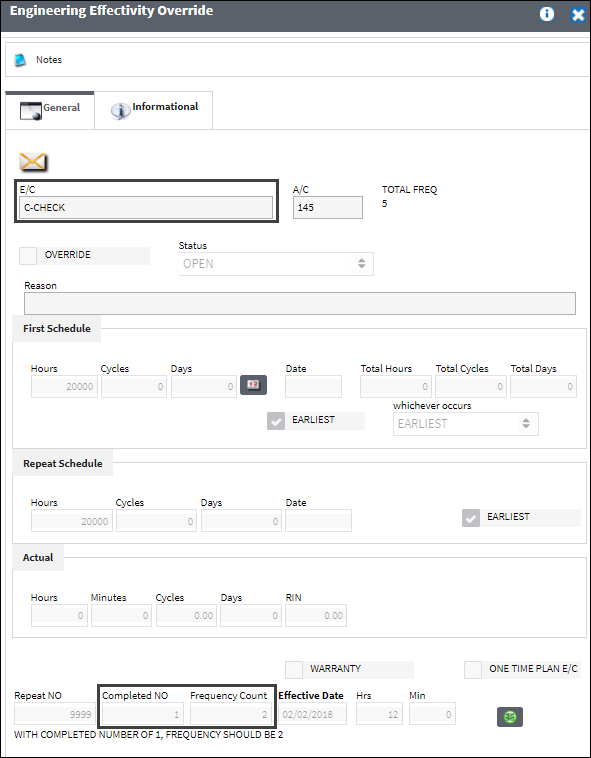
The child E/C has not yet been complied with for A/C 145.
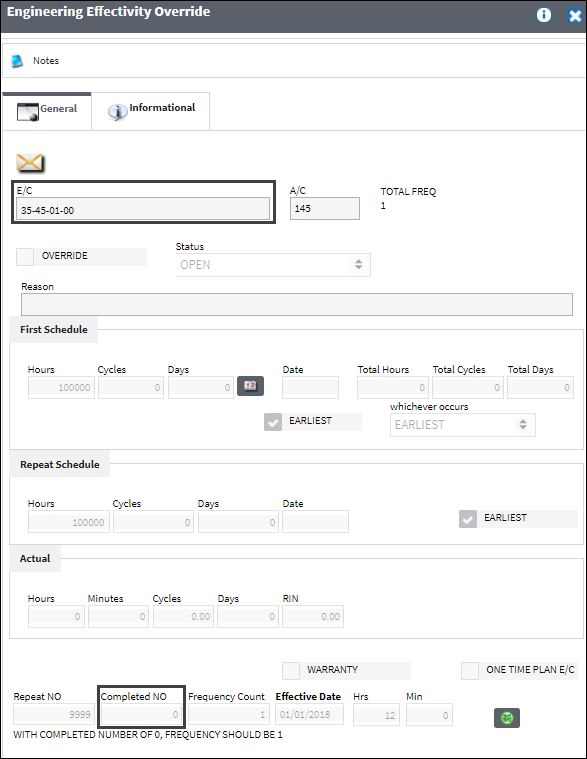
Upon the next compliance for the parent E/C (frequency 2) the child E/C is called on.
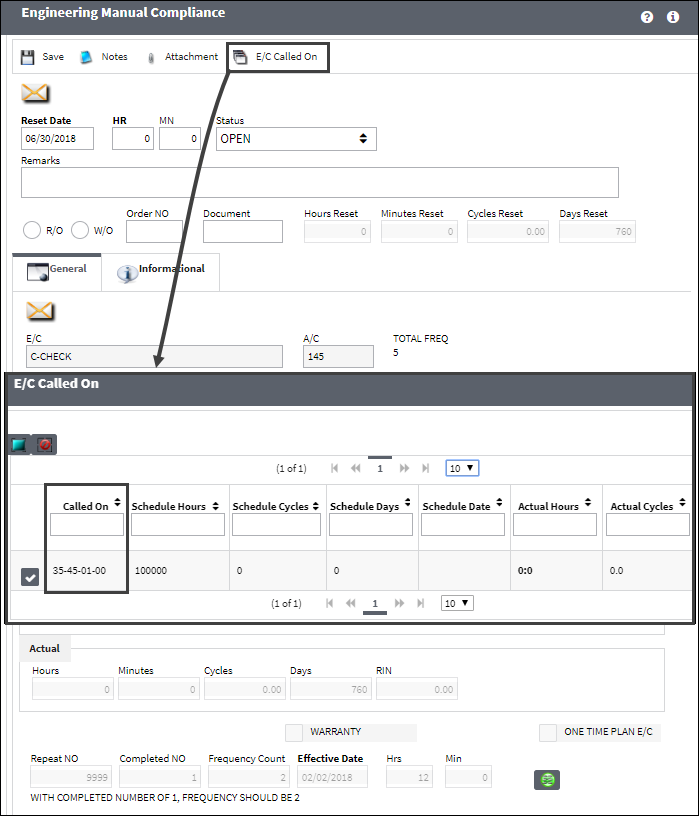
The parent E/C has now been complied with 2 times for A/C 145.
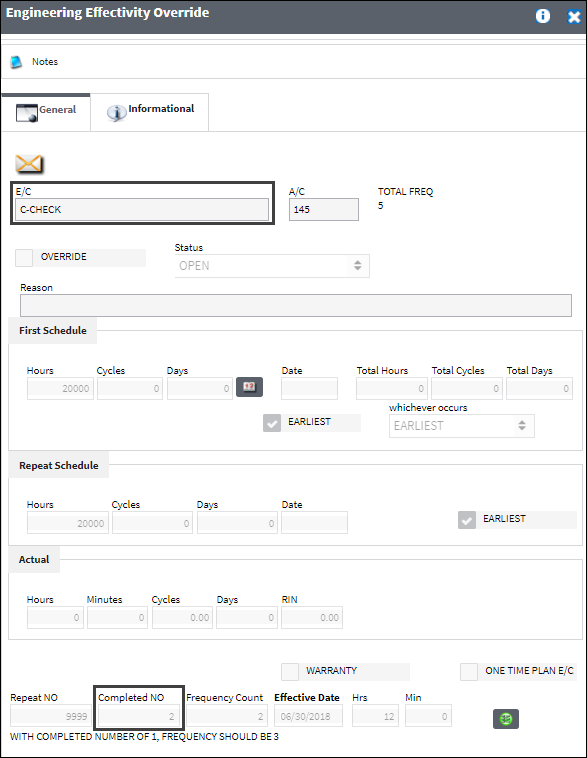
And the child E/C, called onto the parent E/C's 2nd frequency, has also been complied with for A/C 145.
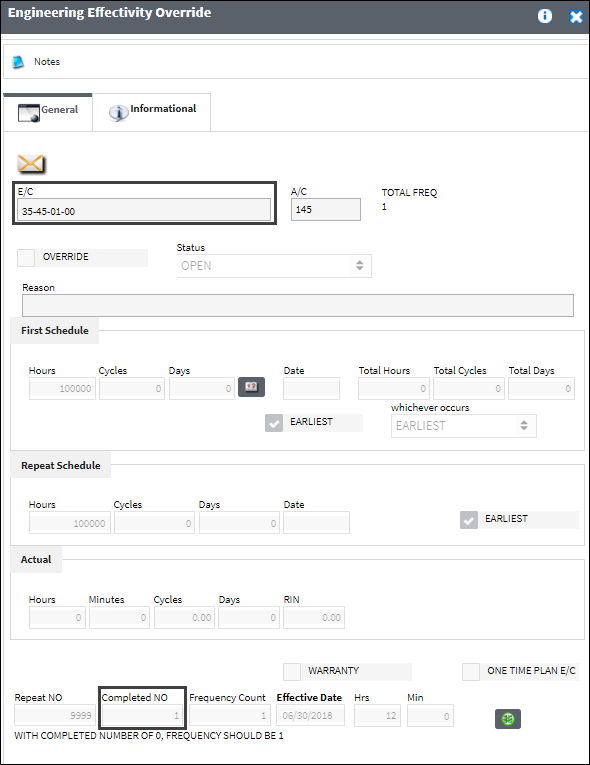
When the parent E/C is complied with the 3rd, 4th, 5th, 6th time, the child E/C will not be called on.

The child E/C is called on to the parent E/C at the parents 7th compliance (2nd frequency).
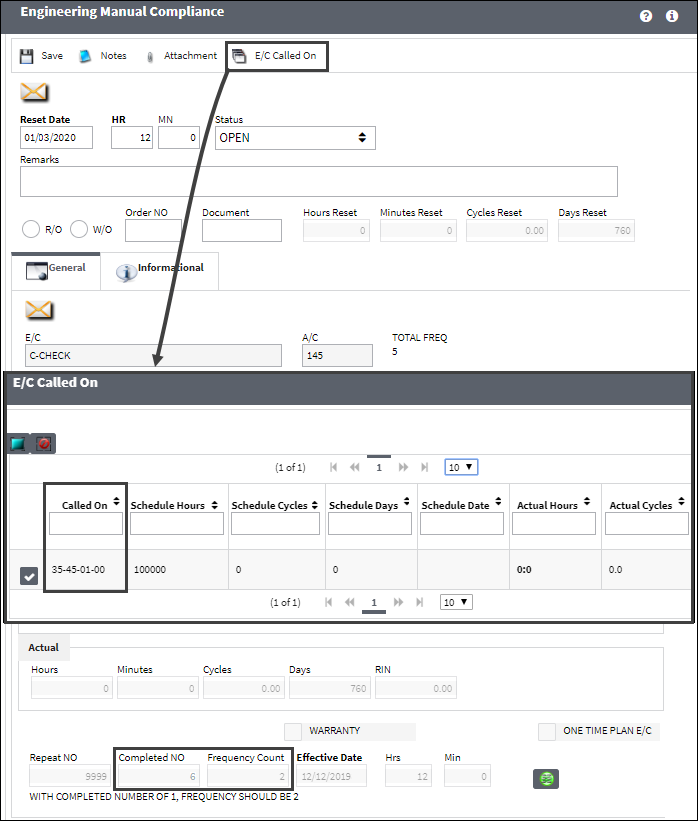
The child E/C receives its second compliance.

The child E/C will continue to be called on to the parent E/C each time the parent E/C reaches its frequency of 2.


 Share
Share

 Print
Print